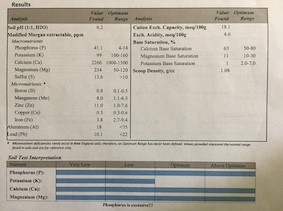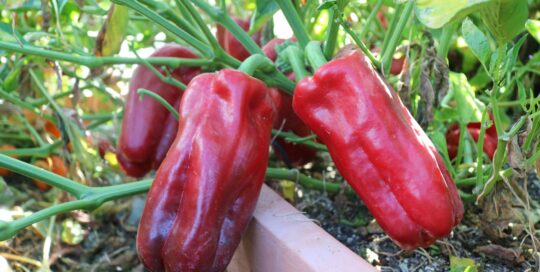Reading Soil Test Results from a Vegetable Garden
Views: 1341

Interpreting your soil test results is the next step in the process of finding out what you are dealing with as far as your vegetable garden soil is concerned. Soil tests come back with various numbers, percentages and some indication of whether your garden’s levels are within an acceptable range. To the uninitiated, the numbers and information provided could set your head spinning.
I sent my soil from my new vegetable garden plot to the Soil and Plant Nutrient Testing Lab at the University of Massachusetts. It’s a completely new gardening space for me so knowing what I’m working with is important. I’ve just received soil test results via email and am curious about what all these numbers mean. Luckily the results were accompanied by a list of comments as well as handy links to relevant UMass gardening and agricultural resources, one of which is the Interpreting Your Soil Test Results site. From reading the recommendations and the link, here is what I am working with:
Soil Acidity
A soil pH of 7.0 is considered neutral, and with mine ringing in at 6.2, it’s slightly on the acidic side. Not as acidic as the average New England soil, though, which tends to fall in the range of 4.5-5.5. When soils are acidic, this cuts down the availability of Nitrogen, Phosphorus and Potassium that the plants can take up for use. Limestone is used to raise the pH of soil. In my case, the pH is within an acceptable range of 6.0-7.0 for growing vegetables; the recommendations sent with my results, however, suggested I do add 3.75 lbs. of lime per 100 sq. ft. both in spring and fall to help raise the pH up just a tad to 6.5.
Excessive Phosphorus (P)
At a reading of 41 parts per million (ppm), it is way above the optimum range of 4-14ppm. In fact it’s so excessive, the soil test results came back with “Phosphorus is excessive!!!”—three exclamation points!!! Both the comments and the online resources say to not add any additional phosphorus at this time. This means I will need to carefully chose my soil amendments and use those that have no phosphorus. They also recommend taking measures to limit the water runoff from plots that have excessive phosphorus, as phosphorus is a big problem in New England waterways.
High Calcium (Ca)
Calcium is essential for properly working cell walls and membranes, and is especially important in actively growing parts of the plant. At a reading of 2266ppm Calcium, levels are beyond optimum levels (1000-1500). However, the recommendations didn’t suggest taking action.
High Magnesium (Mg)
Like calcium, my soil’s magnesium levels (234) were above optimal (50-120), but no corrective measures were given.
Metals
The soil test results routinely include a check of the metals aluminum and lead. My sample had rates of 18 and 10, respectively, well below the optimum range of less than 75 and 22, respectively. Great news! I was most concerned about the presence of lead, in particular.
You’ll notice there are no soil test results for the amount of Nitrogen in the soil. That test was an additional fee, which I chose not to have done. However, since Nitrogen is constantly leaving the soil through biomass removal (i.e. harvest and cleaning up the garden), Nitrogen addition is always a good idea. Their recommended way of adding it to the soil is with Dried Blood, which I’ve never used before. We’ll see how my dog reacts to the odor!
Meet Ellen Wells
When you’re raised on a farm, you can’t help but know a thing or two about gardening. Ellen Wells is our expert on edible gardening.…
Ellen's Recent Posts

Pepper Red Impact an All-America Selections Winner






